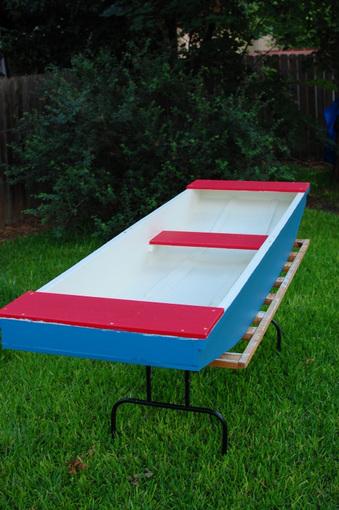
My son and I built a wooden boat based on plans from The American Boy’s Handy Book, which are similar to the instructions in a Scientific American supplement from 1876
The Boy’s Handy Book instructions say,
To build a scow-shaped row-boat is not a difficult feat, even for a boy; and when it is finished he will find it to be a very convenient boat, roomy, and not hard to row.
Below are my modern notes to supplement the 19th century instructions. My son and I were doing it together. I tried to stay in the spirit of building it as an independent child.
All the supplies were available at big box stores and we completed the whole project with non-electric hand tools.
To seal the joints, The Boy’s Handy Book recommended “saturate pieces of woollen cloth with paint and place them between the different parts before they are joined.” We sealed each joint during construction with roofing asphalt that comes in a caulk tube. That stuff never tries and makes a mess, but may have contributed to a successful project.
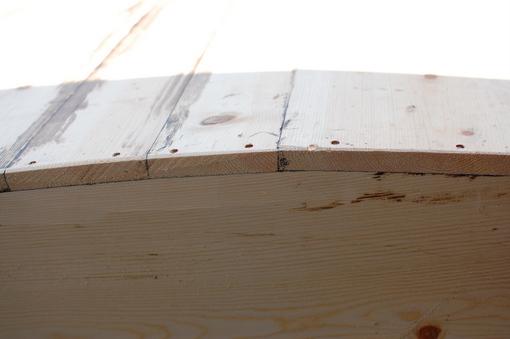
The nicely made joints above opened up significantly as the wood dried, probably exacerbated by the fact we left the boat on the driveway in direct sun for several weeks before painting it. I filled the cracks with 100% cotton yarn from Walmart (Peaches & Creame brand) and neoprene roofing sealant that comes in a caulk tube. The neoprene dries quickly and painted fine. However, it releases a lot of volatile organic compounds (VOCs), which is not really child-friendly.
Several days before we launched the boat for the first time, we filled it with water in the backyard. The first try we couldn’t even fill the boat because the water ran out so fast. After three days the wood swelled and it held an entire boatload of water overnight. At launch we had no leaks. After it sat on the bank several days, we had a few small leaks, but nothing you couldn’t bail easily. A day back in the water and it was back to not leaking.
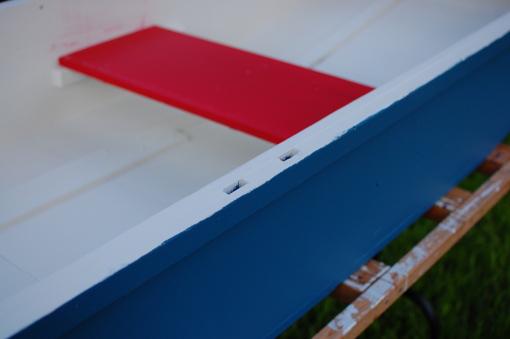
We made mortises in the gunnels for thule pins (oar locks), but never made the pins. Regular canoe paddles work fine. Thule pins would interfere with the boat laying upside down, so they would probably need to be removable. If it’s your first boat, I would just skip the thule pins altogether.
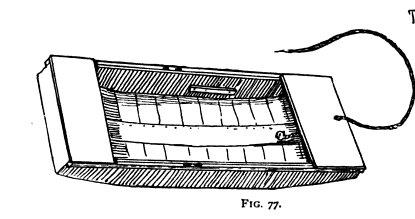
The keelson is the board in the bottom of the boat you can see in this picture. We originally tried to use a 1x8 for the keelson, but we could not bend it into place, even using hot water. We ended up using 1/2" x 2" strips of air-dried hackberry. Hackberry is hard, but very flexible. It easily conformed to the shape of the boat with no heat, steam, or water. We attached it with 6d galvanized nails clinched over on the inside. For each nail we drilled a pilot hole from the inside out. Then one person nailed from the outside in while the other held a 5lb hammer on the strip to keep it from bouncing up.
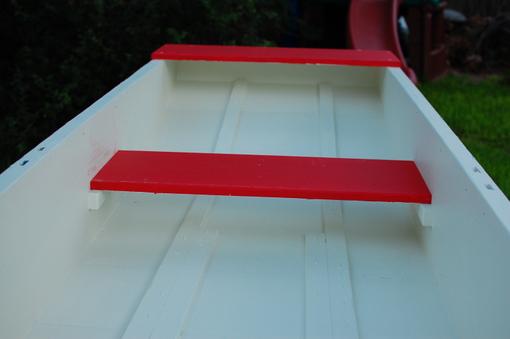
You can use a 1x8 for the keelson, just make sure you bend it to form the shape you cut in the sides.
We painted the boat with ordinary latex exterior paint.
We attached a screen door handle to each end of the boat. Those are very handy for moving the boat and tying it up.
We made an anchor out of a rock with a natural hole in it. The anchor held in moderate wind.
After building this, I realized that every piece of the design fits together and adds strength. The keelson keeps the bottom planks attached to each other so you don’t step through the boat. (The bottom planks are nailed on.) The gunnels add strength and give you something to grab on to. The seats in the bow and stern serve like giant knees that keep the boat frame from racking. The middle seat reinforces the sides. It gets an A for simplicity.
With ~300lbs in the boat, it floats fine. However, ~400lbs is too much for it.
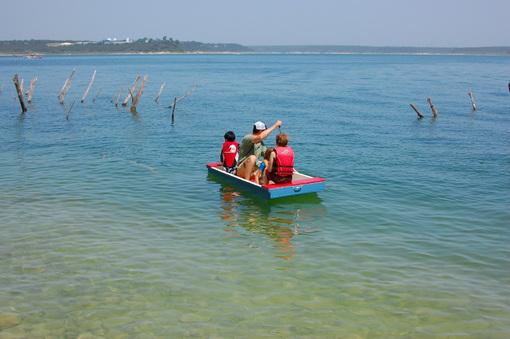
The boat is an absolute pleasure to use. I’ve been in several different small craft and this one is the most fun. For one thing, it is very stable. My 60 lb son can climb in the side of the empty boat with no problem. Try doing that in a canoe. You can easily stand in it. It also rides low, which makes it easy to paddle and you feel connected with the water.
Maybe we just had beginner’s luck, but it turned out great. This is a terrific hand tool project.
Update from 2017: The scow lasted one summer, but it was the highlight of that summer. By the end of the summer, the joints were leaking badly, but the boat continued to float and provided hours of swimming fun. When the summer ended, we pulled it high up on shore, but it got washed away in a flood and we found it in pieces downstream.
If you build one, keep in mind that the boat is quite heavy, but still tons of fun.
